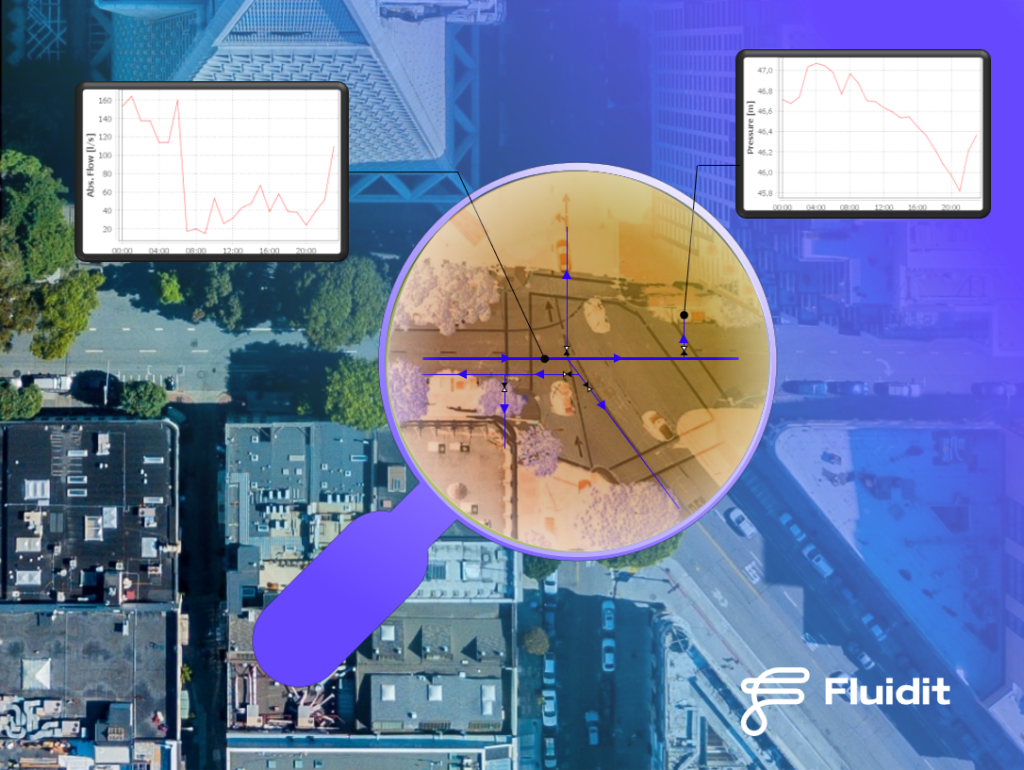Written by Kalervo Aho

There are numerous ways in which hydraulic modeling can help utilities to understand, operate and maintain their assets. The higher efficiency will eventually count into better OPEX and CAPEX as well as higher service levels and higher quality of service to utility customers.
As we all know most of the utility assets are hidden and it is difficult to analyze how the system works without a model. The accuracy and completeness of the model determine how well it corresponds to reality. In Fluidit we believe that the model should be as close to reality as it is possible. This means that model should include all the pipelines, tanks, reservoirs, consumers, pumps, valves, and control systems in one-to-one accuracy with calibrated information from the SCADA system. Creating a model with this level of accuracy can be time-consuming, but it will be beneficial in the end.
I believe that every utility should have a hydraulic model in place and understand the basics of how to use it in their daily operations. Here are some of the reasons why (most of them are applicable to district heating, water distribution, and sewer -systems):
- Improved planning of new infrastructure: Hydraulic modeling help utilities to plan and try out new technical solutions easily before engaging in more detailed planning or construction, thus saving money and time later in the process.
- Reducing NRW (non-revenue water): Hydraulic models can help utilities to find where their network is leaking, and plan fixes accordingly. Managing the pressure levels to sufficient levels will reduce leaks significantly.
- Preparing for disasters: With modeling and scenario analysis utilities can prepare for different types of disaster events. Modeling can greatly help utilities to reduce downtime and limit the effects of contaminations in their network.
- Improved quality of water: Using models to Identify and fix quality issues in networks can improve water quality significantly.
- Improved efficiency: Using models for finding bottlenecks, poorly sized pumping, and poor designs improves the overall efficiency of the system significantly.
- Improving reliability: Hydraulic models can find out critical pipelines, the resilience of critical customers, and the overall reliability of the networks.
- Improved maintenance planning: Hydraulic models will help target and prioritize investments in more critical sections of networks.
- Water conservation: Modeling the capacities and volumes of the network utility can plan the use of its water resources more wisely. Operating water resources to their optimal yields will make the system overall more resilient to droughts.
- Better overall accuracy: Understanding the flow directions, flow amounts, pressures, energy consumption and the overall operation of the network will yield a more accurate understanding in the terms of utility asset management. Planning the optimal locations of pressure or flow sensors can be conducted with hydraulic models as well as finding out accidentally closed and forgotten valves.
- Service your customers better: Identifying issues with hydraulic modeling before the problems may become critical and before the customers’ service quality might be affected.
- Reduce maintenance costs: Identifying and fixing problems in the network before they become bigger will reduce the overall costs significantly.
- Enhance the safety of the distribution system: Identifying and training for hazards will increase the safety of the public.
- Increase security: Understanding the critical section of the network will allow the utility to take precautions to protect and reduplicate sections of the network to prevent the operations of malicious actors.
- Achieve net-zero goals: Optimizing the energy consumption of the utilities can contribute significantly to the global goal of reaching net-zero carbon emissions.
- Ensure regulatory compliance: Understanding the water system behavior with modeling will help utilities to ensure that they comply with all the required regulations.
- Make utility operations transparent: Using hydraulic modeling will enable the utility to produce maps, graphs, and information for its personnel, customers, and other stakeholders thus making the whole business more transparent and trustworthy.
- Getting the best out of your assets: Using hydraulic modeling utilities can use their equipment to full efficiency and sometimes even avoid investments that seemed mandatory in the beginning.
- Support for decision making: Making decisions in a utility is not an easy task, since things are planned to last at least 30 to 40 years. Using models and what-if scenarios utility leaders can make decisions that can stand the test of time.
- Innovate water: Hydraulic models can create valuable input into new innovations such as digital twins or other new digital products.
- Improve the quality of your data: A wrong result is a good result. When hydraulic models are showing “wrong” results you will find out the problems in your documentation.
To conclude, a hydraulic model will benefit utility asset management by helping them understand, maintain, operate and invest in a more efficient manner. This leads to cost savings, higher service levels, and better quality of service to customers. To be able to reap the all benefits, it is vital that the model includes all relevant components of the distribution system and that it is calibrated to SCADA and measurement data. While creating such a model can be time-consuming, the long-term benefits are well worth the effort.